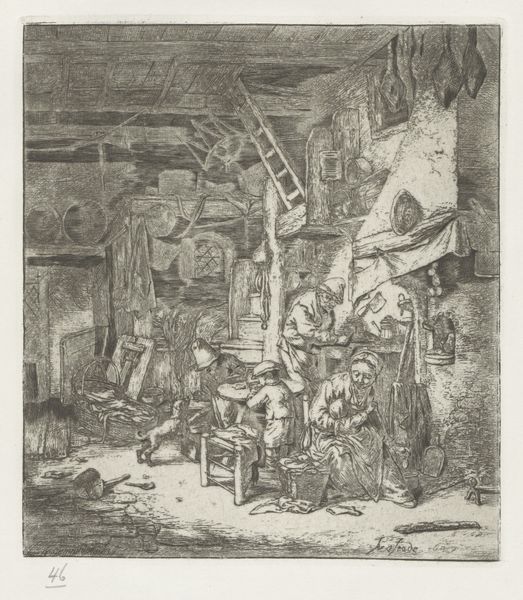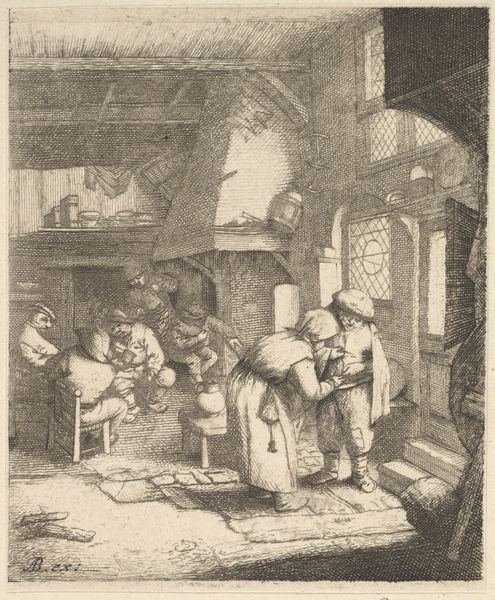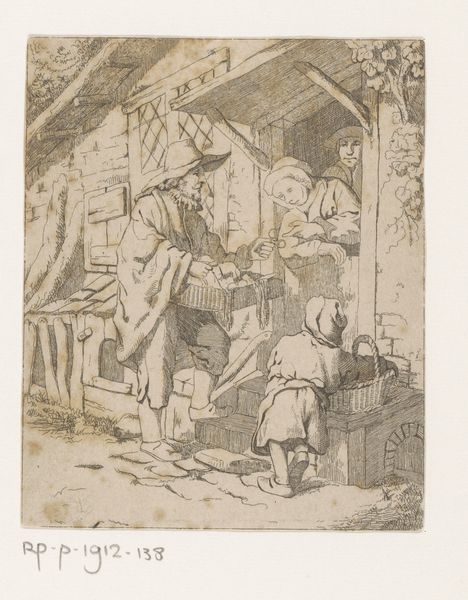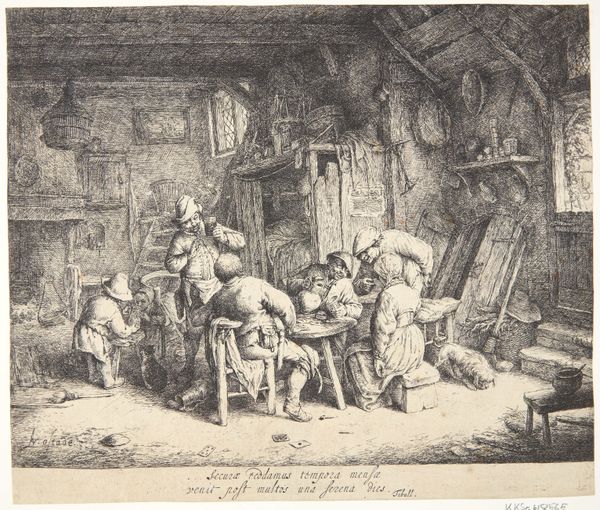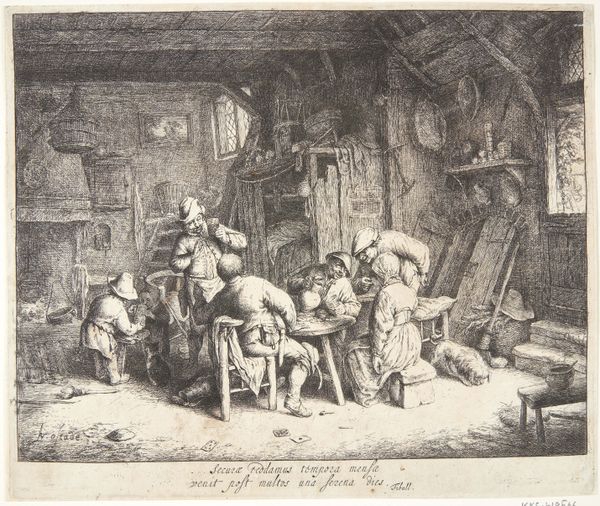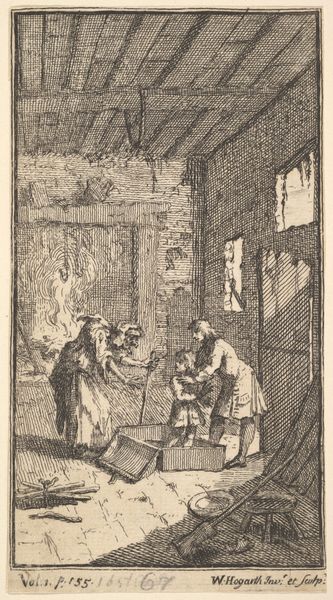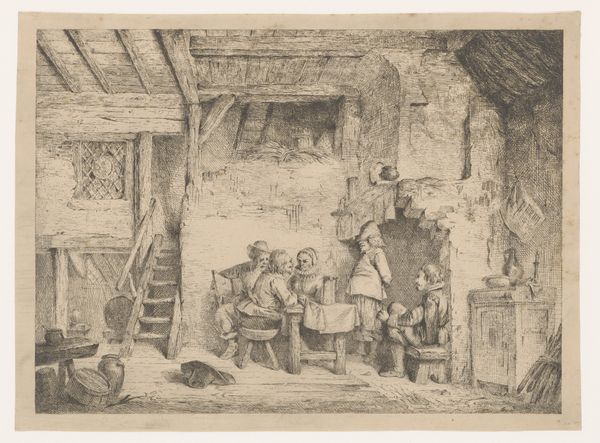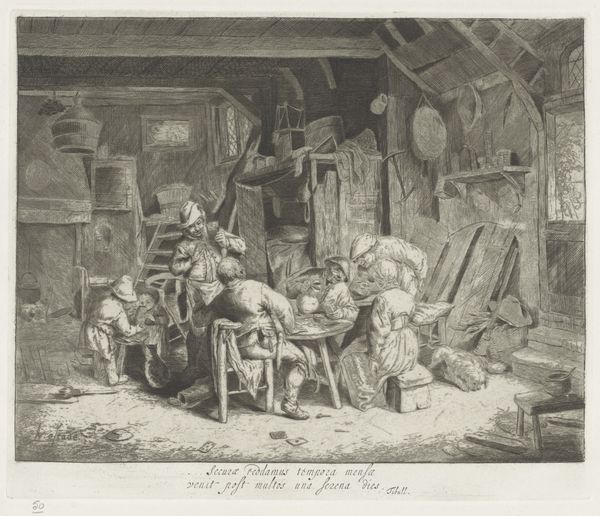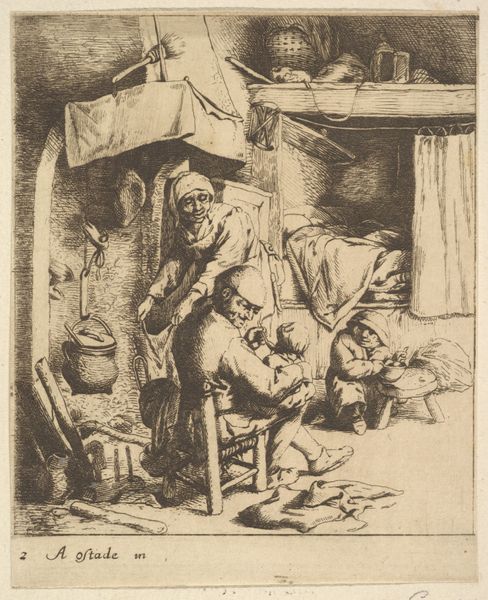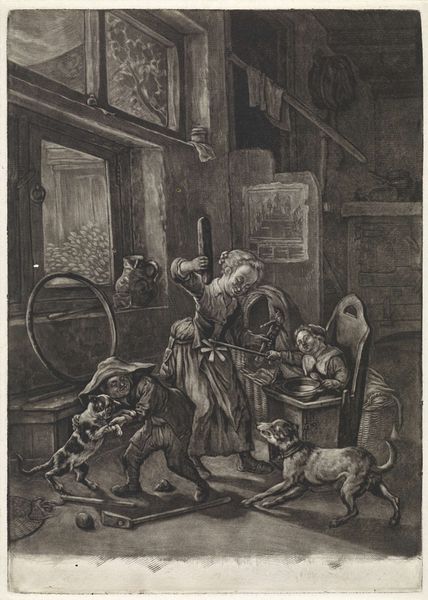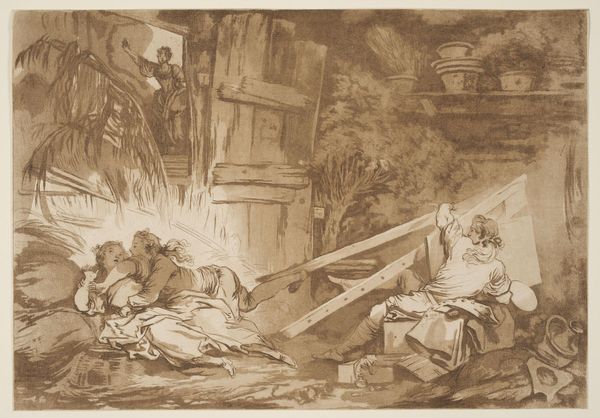
drawing, paper, pencil
#
drawing
#
pencil sketch
#
landscape
#
figuration
#
paper
#
pencil
#
genre-painting
#
northern-renaissance
#
pencil art
#
realism
Dimensions: height 174 mm, width 146 mm
Copyright: Rijks Museum: Open Domain
Curator: Let’s turn our attention to this drawing, "De boerenfamilie", or "The Peasant Family", from the Rijksmuseum collection, dated somewhere between 1647 and 1735, and attributed to an anonymous artist. Editor: Immediately striking is its intimacy. The subdued tones of the pencil, the compressed composition, and the figures clustered within a humble interior... it evokes a world of quiet labor. Curator: Precisely. Note how the artist masterfully employs a range of pencil techniques. From the delicate hatching that defines the light falling across the figures to the bolder strokes that delineate the architecture, it showcases remarkable control. The perspective, too, directs the viewer's eye around this domestic space. Editor: I am drawn to the details of the domestic sphere depicted. Look at the array of objects hanging from the walls, each alluding to a daily task and material necessity. It feels like a snapshot of a specific socio-economic reality. Consider the time it took to procure or produce the depicted furniture, pots, utensils, or even the children's clothing. Curator: True, the visual clarity brings a grounded realism to the scene. But it’s more than just an illustration; it speaks to universal themes—family, work, and the intimate details of everyday life rendered with subtle sensitivity. The careful balance within the frame and how it emphasizes depth… Editor: Though attributed to an anonymous artist, it nonetheless provides insights into how early modern life depended so integrally on handmade production within small-scale settings, and encourages us to contemplate all the labor woven into daily life and social cohesion. Curator: Indeed, it presents a carefully constructed narrative of a humble family existence. It prompts questions about art historical frameworks for studying art production. Editor: It really encapsulates the enduring power of humble materials and daily activity to articulate collective needs and common stories.
Comments
No comments
Be the first to comment and join the conversation on the ultimate creative platform.

